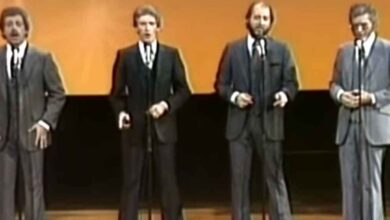Haggard,Keith,Allan Coe,Joe Shaver,Ingram- Working Man’s Blues
“Workin’ Man Blues” by Merle Haggard is a cornerstone of country music, emblematic of the genre’s deep-rooted connection to the everyday struggles and triumphs of the working-class American. Written and performed by Haggard, who himself hailed from a modest background, the song resonates with authenticity and genuine understanding of the laborer’s life. It’s a celebration of hard work, perseverance, and the simple pleasures that provide solace after a long day’s labor. The lyrics encapsulate the pride and dignity in labor, echoing the sentiments of countless individuals who find solace in their toil.
This song’s significance extends beyond its melody and lyrics; it’s a cultural artifact that reflects the socio-economic landscape of late 1960s America. Haggard’s portrayal of the working man’s life is not just a personal narrative but a collective one, shared by many who found in it a voice for their own unspoken experiences.
The impact of “Workin’ Man Blues” is further amplified by its numerous covers and performances by other artists, each bringing their unique interpretation while preserving the song’s core ethos. Notably, the 2005 CMT Outlaws performance, featuring icons like Toby Keith, David Allan Coe, Billy Joe Shaver, and Jack Ingram alongside Haggard, stands out as a testament to the song’s enduring legacy and its ability to unite artists across generations.
Moreover, the song’s inclusion in popular culture, such as its feature in a “Simpsons” episode, underscores its widespread appeal and the way it has permeated various facets of American life. The song’s narrative, while specific in its depiction of the working man’s blues, is universal in its themes of resilience, hope, and the unyielding human spirit.
In exploring the depths of “Workin’ Man Blues,” one encounters a tapestry of American life, woven with the threads of hard work, communal identity, and the enduring nature of music as a form of expression and connection. It’s a reminder of the power of a song to encapsulate a moment in time, to tell a story that resonates across decades, and to bring together people from all walks of life in a shared experience of music and storytelling.
For those looking to delve deeper into the narrative and historical context of “Workin’ Man Blues,” resources like Wikipedia’s comprehensive entries on Merle Haggard and the song itself, as well as dedicated country music platforms, offer rich insights and analyses. These platforms provide not only the song’s background but also explore its place in the broader tapestry of country music and American cultural history.





